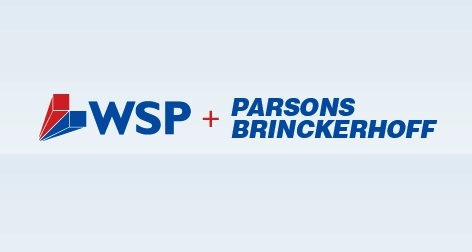Giant design/engineering firm WSP Global said today it plans to acquire infrastructure professional services firm Parsons Brinckerhoff from PB's parent organization, Balfour Beatty plc. The deal, which has been approved by the boards of WSP and Balfour Beatty, has an enterprise value of $1.243 billion, plus another $110 million in cash retained by PB.
The acquisition, if approved by Balfour Beatty shareholders and cleared by antitrust regulators, would create a mega-firm of more than 30,000 employees - 17,500 from Montreal-based WSP, 13,500 from New York-based Parsons Brinckerhoff. WSP currently has >300 offices in 30 countries on 5 continents; PB has 170 offices worldwide, with about 5,000 employees in the U.S.
The consolidation would strengthen WSP's position in the U.S. transportation segment and in the United Kingdom, where Parsons Brinckerhoff is a strong player. WSP said in a release that the move would also give the firm "a stronger presence in key growth regions such as Asia and Australia."
Parsons Brinckerhoff was founded in 1885. It is known for its expertise in infrastructure services in water, mining, power, transportation, energy, community development, and environment.
WSP, which acquired Flack & Kurtz in 2012, is considered a major player in urban planning and environmental projects, and in the engineering of complex buildings.
Related Stories
| Mar 3, 2014
Negotiate your way to success
There are few business skills as important as negotiation. Many successful businesspeople pride themselves on their ability to turn a deal in their favor. Here are a few key negotiation principles to ensure you’re generally getting a good deal.
| Mar 3, 2014
5 ways to gain clients you actually like
Gaining more clients is one thing. Gaining more clients that you actually like is something else entirely. Here are some tips to perfect the art of attracting and retaining clients that you enjoy working with.
| Mar 3, 2014
Engineering and construction CEOs are cautiously optimistic about the global economy, says PwC
Firm leaders remain leery about the availability of skilled workers, the state of government debt and deficits, and rising material prices, according to PwC’s 2014 Global CEO Survey.
| Mar 1, 2014
Dramatic fractal roof highlights SOM's new Mumbai airport terminal [slideshow]
The terminal merges new technology and traditional regional architecture, notably in the fractal roof canopy that runs throughout the terminal.
| Feb 28, 2014
Six finalists selected in design competition for Canadian Holocaust monument
David Adjaye and Daniel Libeskind are among the finalists for the National Holocaust Monument, planned near the Canadian War Museum in Ottawa.
| Feb 27, 2014
Gensler reveals 44 design trends for the next decade
The 82-page report covers dozens of emerging trends in healthcare, commercial office, hospitality, tall buildings, and more.
| Feb 27, 2014
Target converts former prison dump into latest big-box store
Target's new San Rafael, Calif., location was built on the site of the former San Quentin prison dump.
| Feb 27, 2014
Open or private offices? It depends on the business plan
Open layouts are grabbing headlines as a hallmark of the new workplace—think the Google campus or Facebook's headquarters. And for smaller-scale operations, open designs are often lauded for being less expensive than private office plans. But does that mean all offices should have an open layout?
| Feb 27, 2014
3 reasons to apply computational fluid dynamics on your next project
From right-sizing mechanical systems to understanding the impact of design alternatives, CFD offers a host of benefits for the Building Team.
| Feb 27, 2014
12 facts about heat-treated glass: Why stronger isn’t always better
Glass is heat-treated for two reasons: the first is to increase its strength to resist external stresses such as wind and snow loads, or thermal loads caused by the sun’s energy. The second is to temper glass so that it meets safety glazing requirements defined by applicable codes or federal standards.

















